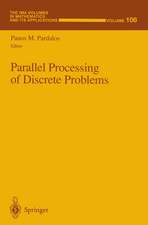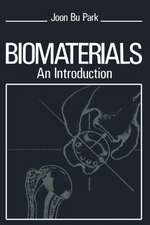Biocomputing: Biocomputing, cartea 1
Editat de Panos M. Pardalos, J.C. Principeen Limba Engleză Hardback – 30 iun 2002
| Toate formatele și edițiile | Preț | Express |
|---|---|---|
| Paperback (1) | 714.83 lei 6-8 săpt. | |
| Springer Us – 21 sep 2011 | 714.83 lei 6-8 săpt. | |
| Hardback (1) | 721.77 lei 6-8 săpt. | |
| Springer Us – 30 iun 2002 | 721.77 lei 6-8 săpt. |
Preț: 721.77 lei
Preț vechi: 759.76 lei
-5% Nou
Puncte Express: 1083
Preț estimativ în valută:
138.10€ • 144.21$ • 114.05£
138.10€ • 144.21$ • 114.05£
Carte tipărită la comandă
Livrare economică 15-29 aprilie
Preluare comenzi: 021 569.72.76
Specificații
ISBN-13: 9781402006418
ISBN-10: 1402006411
Pagini: 280
Ilustrații: X, 264 p.
Dimensiuni: 156 x 234 x 21 mm
Greutate: 0.57 kg
Ediția:2002
Editura: Springer Us
Colecția Springer
Seria Biocomputing
Locul publicării:New York, NY, United States
ISBN-10: 1402006411
Pagini: 280
Ilustrații: X, 264 p.
Dimensiuni: 156 x 234 x 21 mm
Greutate: 0.57 kg
Ediția:2002
Editura: Springer Us
Colecția Springer
Seria Biocomputing
Locul publicării:New York, NY, United States
Public țintă
ResearchCuprins
1 Making Sense of Brain Waves: The Most Baffling Frontier in Neuroscience.- 1.1 Introduction.- 1.2 Relations between EEG and ‘units’.- 1.3 Three levels of hierarchical coding.- 1.4 Simulation of “background” activity.- 1.5 Microscopic coding and noise.- 1.6 Chaotic attractor stabilization and classification enhancement by noise.- 1.7 Mesoscopic to macroscopic interface.- 1.8 Summary.- References.- 2 Computational and Interpretive Genomics.- References.- 3 Optimized Needle Biopsy Strategies for Prostate Cancer Detection.- 3.1 Reconstruction of the prostate models.- 3.2 The Statistical distribution map.- 3.3 The Optimization problem.- 3.4 Optimized protocols.- 3.5 Conclusions and future work.- References.- 4 Phase Entrainment and Predictability of Epileptic Seizures.- 4.1 Introdution.- 4.2 Nonlinear dynamical measures.- 4.3 Selection of brain sites: optimization.- 4.4 Predictability analysis.- 4.5 Predictability results.- 4.6 Conclusions.- References.- 5 Self-Organizing Maps.- 5.1 The Self-Organizing Map Algorithm.- 5.2 Related Statistical Algorithms: A Qualitative Comparison.- 5.3 Background of Decoding Auditory Recordings.- 5.4 Relating the spike Pattern of Auditory Neurons to the Sound Stimuli using SOM.- 5.5 Conclusions and Discussions.- References.- 6 Finding Transition States Using the LTP Algorithm.- 6.1 Introduction.- 6.2 Theoretical background.- 6.3 The LTP procedure.- 6.4 Results and discussion.- 6.5 Concluding remarks.- References.- 7 A Simple Approximation Algorithm for Nonoverlapping Local Alignments (Weighted Independent Sets of Axis Parallel Rectangles).- 7.1 Introduction.- 7.2 Application of the Two-Phase technique to the IR problem.- 7.3 Concluding remarks.- 8 Combined Application of Global Optimization and Nonlinear Dynamics to Detect StateResetting in Human Epilepsy.- 8.1 Introdution.- 8.2 Nonlinear dynamical measures.- 8.3 Zero-one global optimization.- 8.4 Statistical testing of the resetting hypotheses.- 8.5 Conclusion.- References.- 9 functional Magnetic Resonance Imaging Data Analysis with Information-theoretic Approaches.- 9.1 Information-theoretic approaches.- 9.2 Two alternative divergence measures.- 9.3 fMRI neural activation study.- 9.4 Discussion.- 9.5 Summary.- References.- 10 Yeast SAGE Expression Levels are Related to Calculated mRNA Folding Free Energies.- References.- 11 Sources and Sinks in Medical Image Analysis.- 11.1 Introduction.- 11.2 Divergence-based skeletons.- 11.3 Flux maximizing flows.- 11.4 Conclusions.- References.- 12 Classical and Quantum Controlled Lattices: Self-Organization, Optimiza-tion and Biomedical Applications.- 12.1 Introduction.- 12.2 Hamiltonian models of the cellular dynamatons.- 12.3 Self-organization of the neural networks.- 12.4 Bilinear lattices and epileptic seizures.- 12.5 Quantum model of neural networks.- 12.6 Concluding remarks.- References.- 13 Computational Methods for Epilepsy Diagnosis. Visual Perception and EEG.- 13.1 Introduction.- 13.2 Visual perception tests.- 13.3 Data interpretation methods.- 13.4 EEG analysis.- 13.5 LPC and CHARADE interpretation.- 13.6 Conclusions.- References.- 14 Hardness and the Potential Energy Function in Internal Rotations: A Generalized Symmetry-Adapted Interpolation Procedure.- 14.1 Introduction.- 14.2 Theoretical considerations.- 14.3 Applications.- 14.4 Conclusions.- References.



























